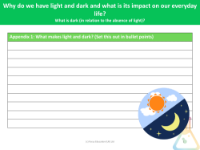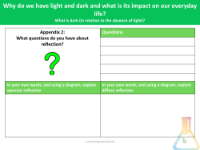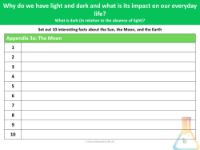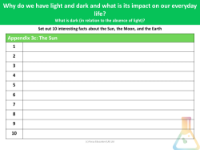What is dark? - Teacher notes
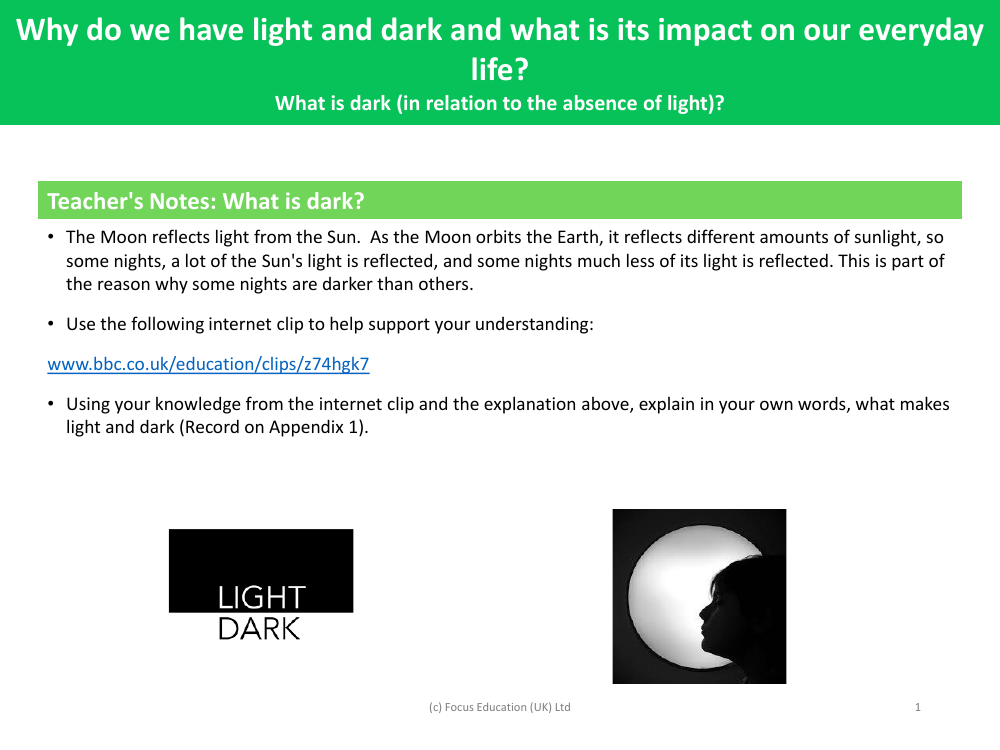
Science Resource Description
The concept of darkness, especially in the context of night time, is explored by understanding the moon's role in reflecting sunlight. The varying phases of the moon are a result of its orbit around Earth, which causes different amounts of sunlight to be reflected back to us. Consequently, this celestial dance between the Earth, Moon, and Sun is responsible for the fluctuating levels of light we perceive at night. On some nights, the Moon reflects a significant amount of sunlight, leading to a brighter nocturnal environment, while on other nights, it reflects considerably less, resulting in deeper darkness.
Teachers can utilise an educational video clip from the BBC to enhance their understanding of this natural phenomenon. After watching the clip and considering the provided explanation, students are encouraged to articulate, in their own words, the interplay between light and dark. This exercise aims to deepen their comprehension of why the night sky's brightness varies and how the absence of light defines what we experience as darkness. Students can record their explanations in the designated section of their workbooks. The broader discussion extends to the impact of light and dark on daily life, prompting students to consider the practical implications of these natural occurrences.

